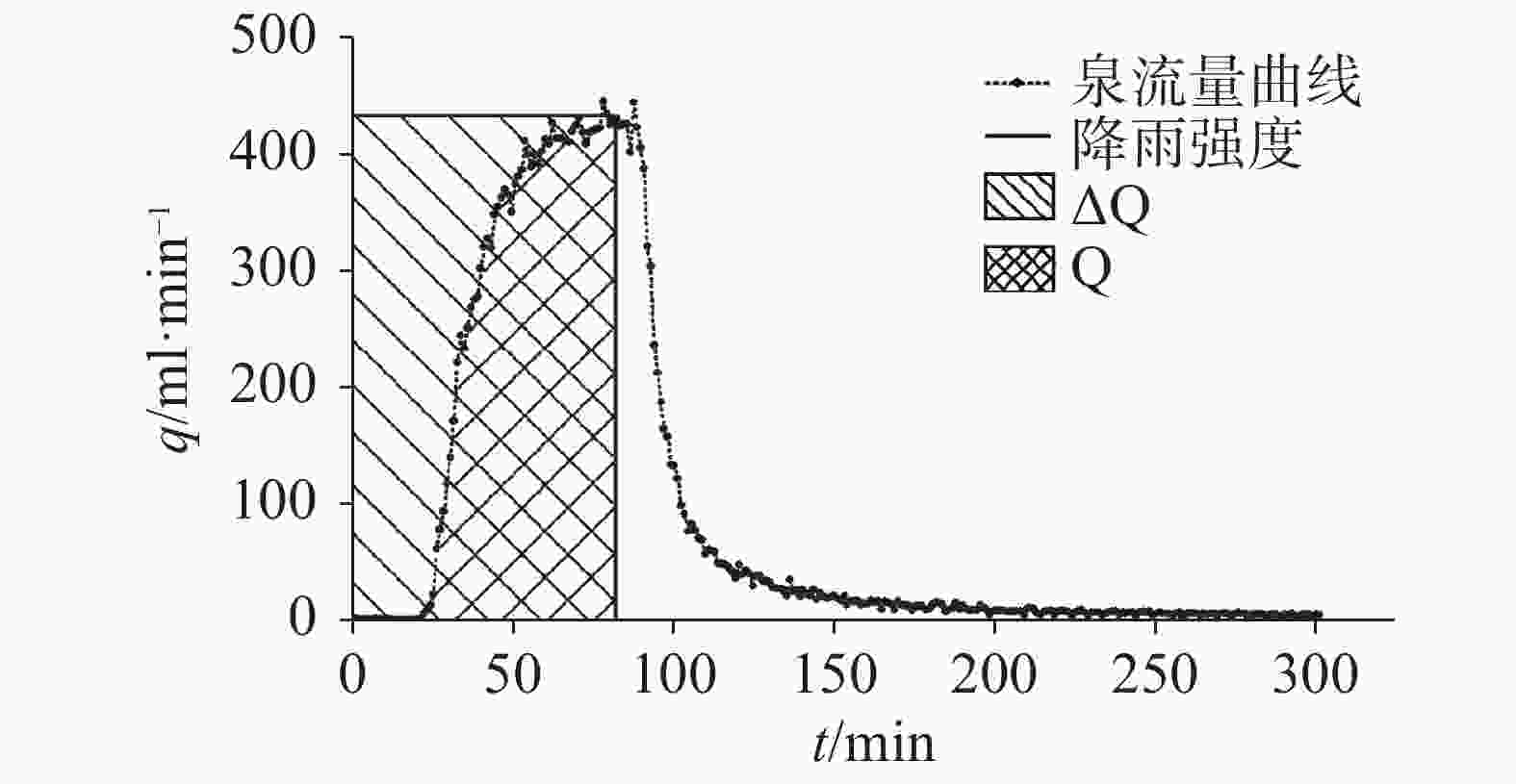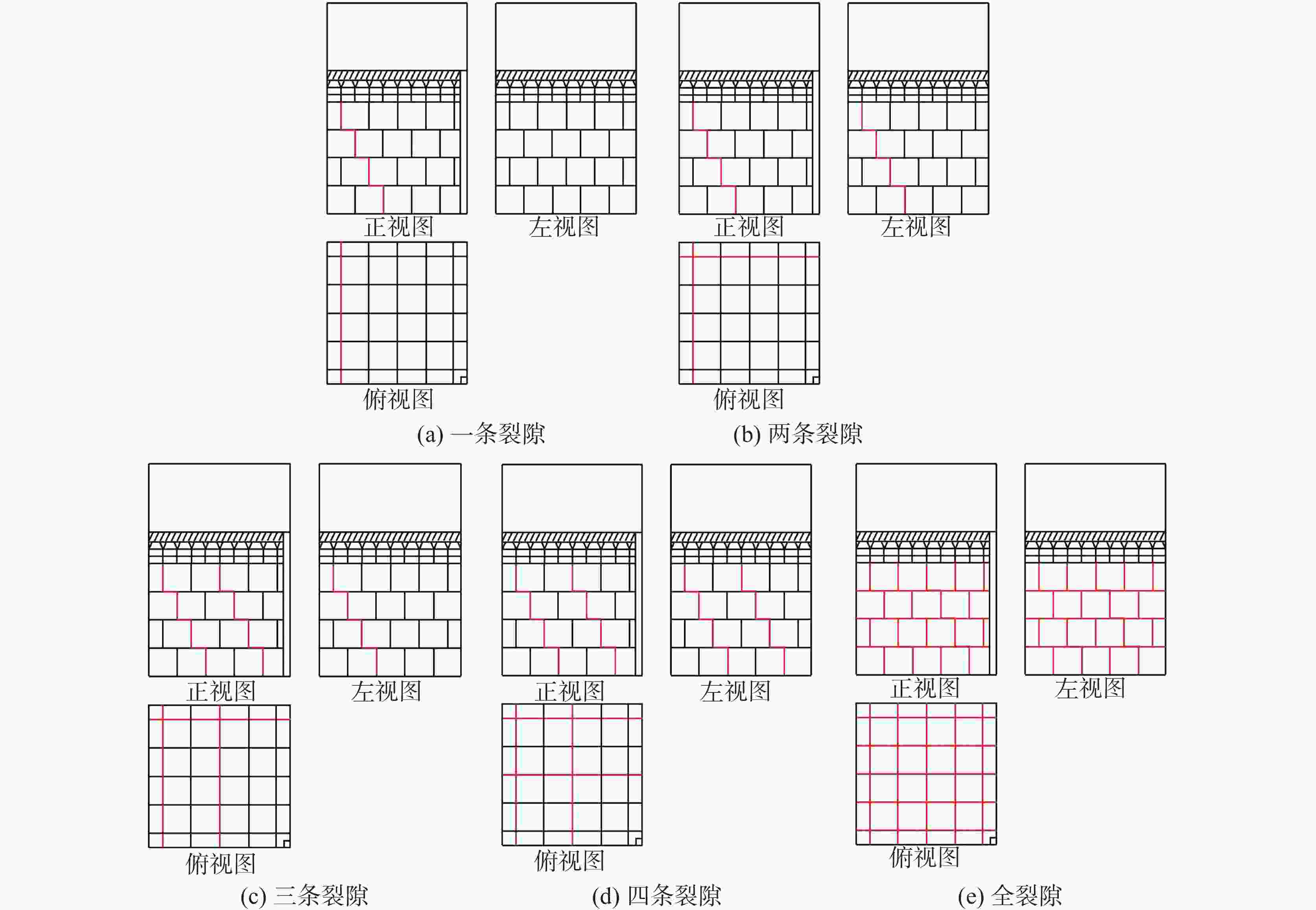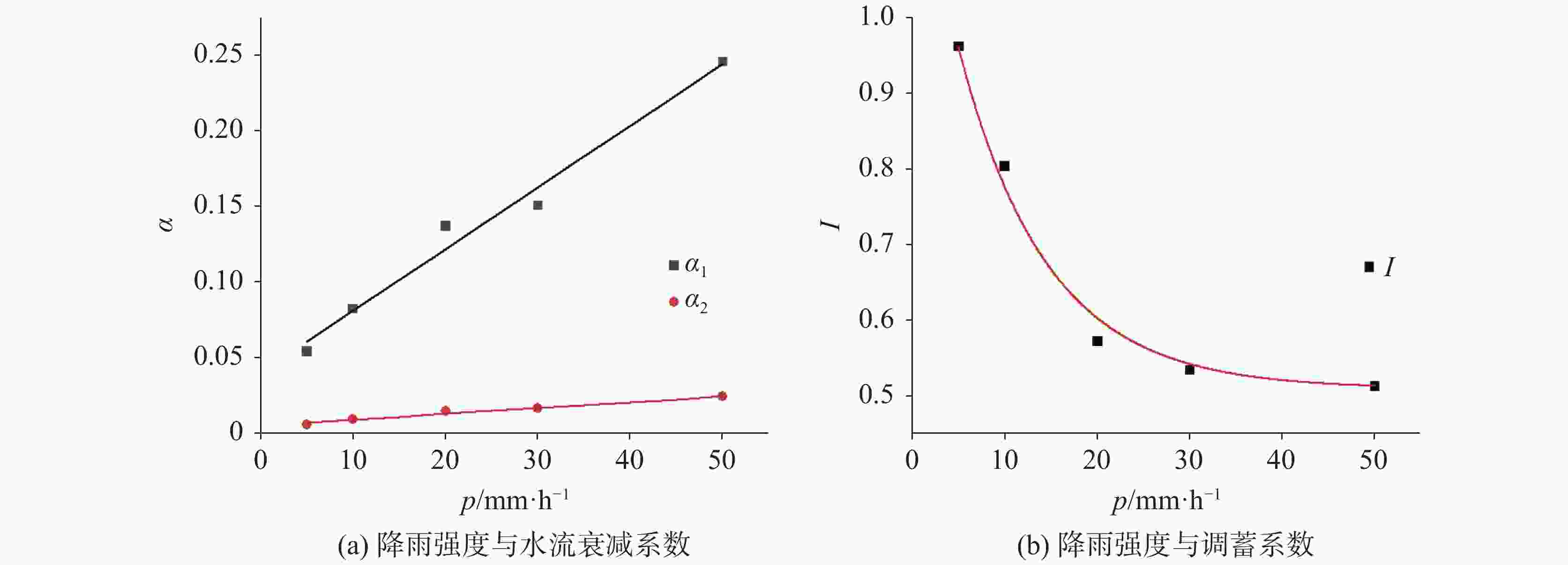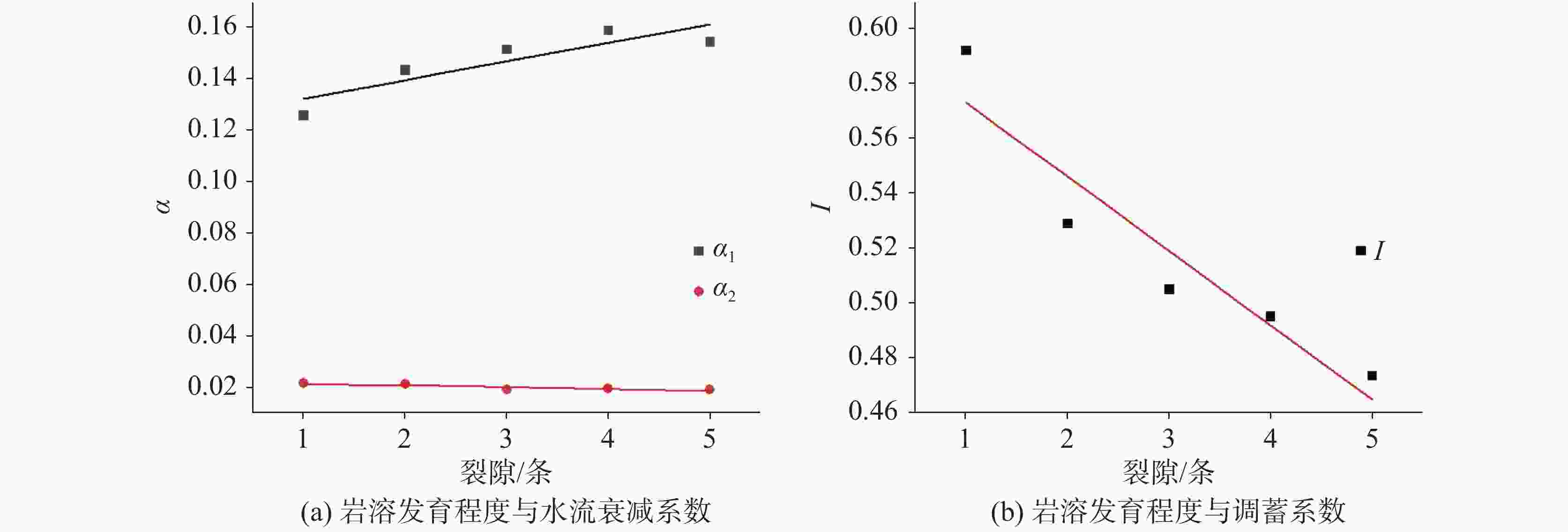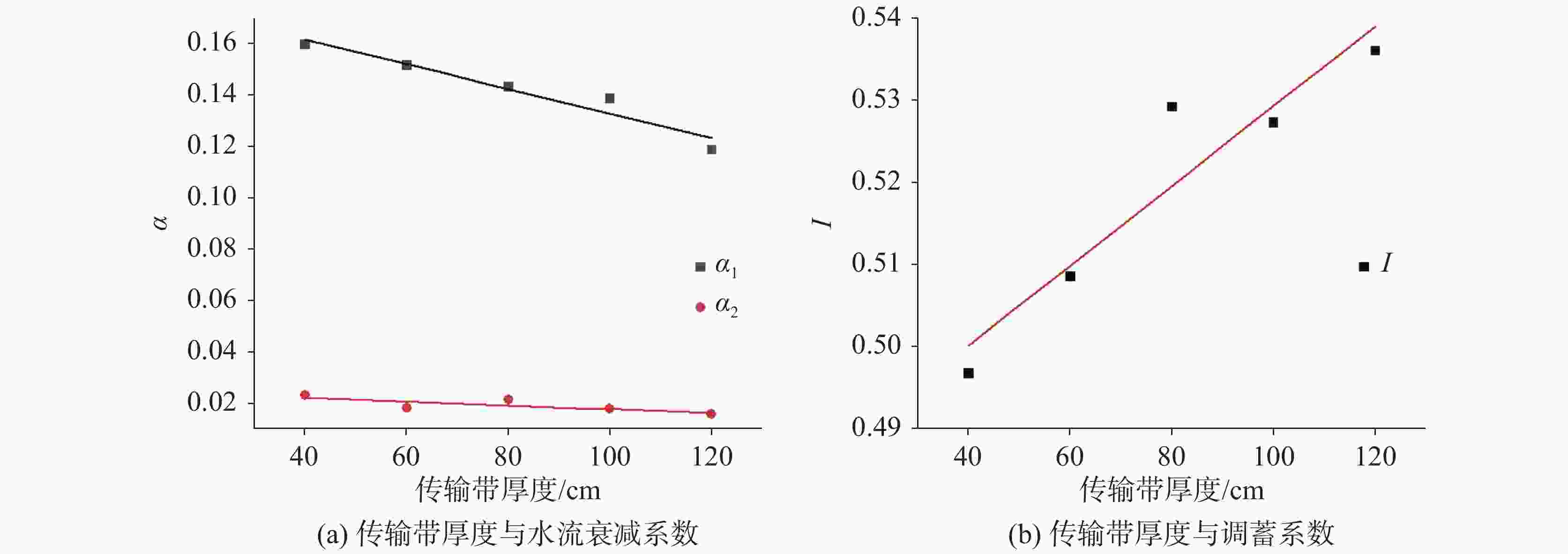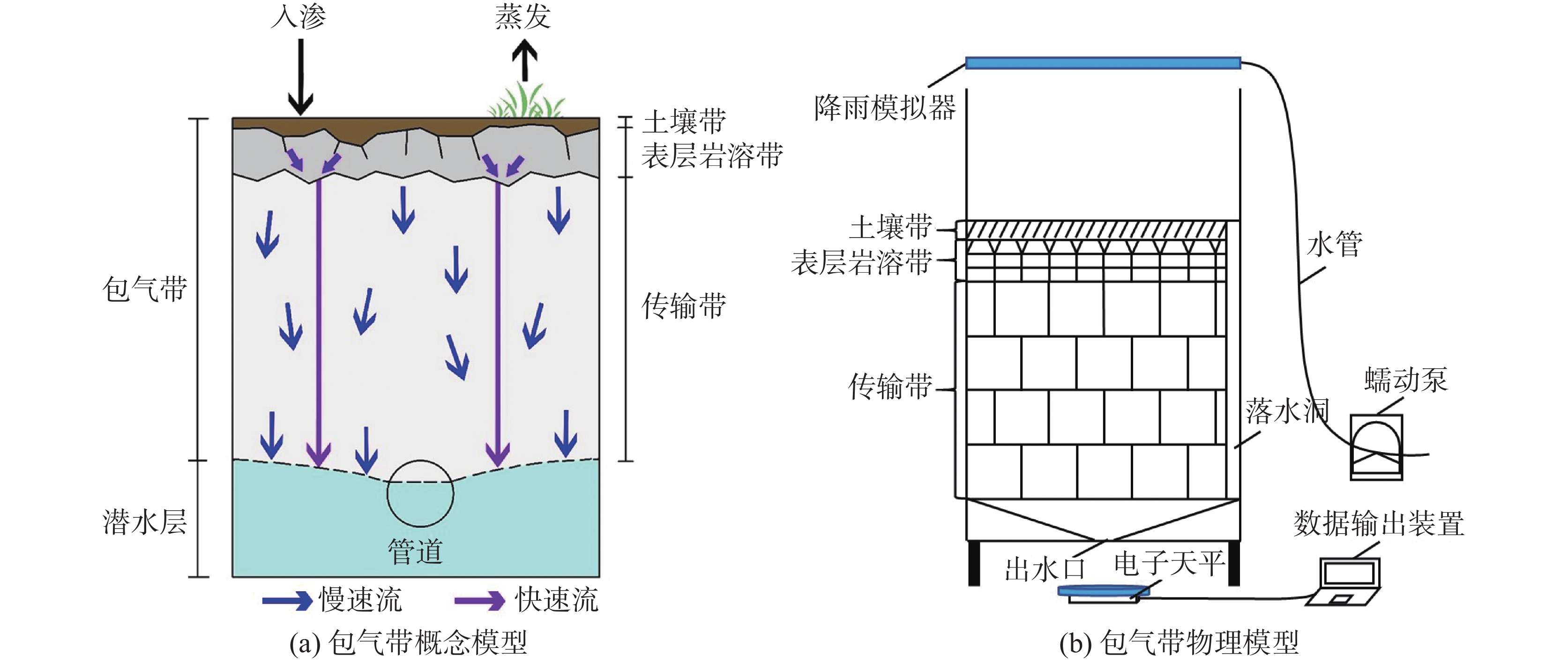Research on water flow attenuation process and regulating capacity in karst vadose zone
-
摘要: 我国岩溶水资源丰富,是岩溶地区重要的生产生活用水来源。岩溶包气带对地下水起着涵养调蓄作用,为定量评价岩溶包气带水流衰减过程和调蓄能力影响因素,通过搭建实验室尺度的岩溶包气带物理模型,分析衰减曲线与调蓄系数,探究降雨强度、传输带裂隙发育程度、传输带厚度对岩溶包气带水流过程与调蓄能力的影响。试验结果表明,降雨强度的增大将引起岩溶包气带水流衰减系数的增大与调蓄系数的减小,降雨强度对结构一定的岩溶包气带调蓄能力的影响有一定限度;随着传输带裂隙增加,快速流衰减系数呈增大趋势,慢速流衰减系数呈减小趋势,调蓄系数呈减小趋势;传输带厚度的增加引起衰减系数的减小与调蓄系数的增大,但对调蓄系数的影响不明显。Abstract:
The karst area in China accounts for about 20% of the total land area. The karst groundwater is rich in resources and is an important source of production and living water in karst areas. The annual average rainfall in karst areas of Southwest China exceeds 1,200 mm, but the time distribution of rainfall is extremely uneven, which is likely to cause drought and flood disasters, and hence will seriously restrict the production and life of local people. The karst vadose zone has the function of conserving and regulating groundwater. Therefore, it is of great significance to study the influence mechanism of water flow attenuation process and regulating capacity in the karst vadose zone for rational development and utilization of karst water resources. The high heterogeneity and the anistropy of the karst aquifer system often make the karst vadose zone form a drainage network and become a channel for groundwater. A karst vadose zone is mainly composed of soil zone, epikarst zone and transfer zone, of which the soil zone and the epikarst zone are main water storage space. The water storage function of karst vadose zone is related to the dynamic regulation of groundwater resources in the epikarst zone. Rainfall infiltration is transferred from the transfer zone to the phreatic aquifer through the regulating and diversion of the epikarst zone. In the karst vadose zone, the low flow velocity in diagenetic pores, micro fissures and carbonate rock matrix shows its feature of slow flow, while the fast flow velocity in large fissures and sinkholes is characterized by rapid flow. Therefore, the heterogeneity of karst aquifer system and the complexity of runoff path in karst vadose zone increase the difficulty of the study on groundwater flow process. In previous laboratory tests on water flow attenuation process and regulating capacity in karst areas, a two-dimensional fissure-conduit model built of polymethyl methacrylate was mostly used. Although it can simplify the structure of aqueous medium, it is quite different from the actual structure, and the soil zone is not considered. Meanwhile, the current studies on the regulating capacity of karst areas are mainly focused on the epikarst zone, and the studies on the influence of the transfer zone on the regulating capacity are very few. In this study, a laboratory-scale three-dimensional model of karst vadose zone was built with limestones. The attenuation curve was analyzed by superposed exponential decay equation, and the regulating coefficient was calculated by formula. The influence of rainfall intensity, fissure development degree and thickness of transfer zone on the attenuation process and regulating capacity of water flow in karst vadose zone were explored. In this study, three tests were set up to explore the influence of the above factors on the attenuation process of water flow and the regulating capacity in karst vadose zone. In Test 1, five control groups with different rainfall intensities were designed, including 5 mm·h−1, 10 mm·h−1, 20 mm·h−1, 30 mm·h−1 and 50 mm·h−1, and the attenuation coefficient and regulating coefficient under the corresponding rainfall intensity were obtained respectively. The analysis of test data shows that the greater the rainfall intensity is, the faster the attenuation speed is, and the influence on the attenuation coefficient of fast flow is greater than that on the attenuation coefficient of slow flow. When the structure of karst vadose zone is fixed, the regulating capacity gradually decreases with the increase of rainfall intensity, but this effect is limited: when the intensity increases to a certain extent, the regulating coefficient is basically unchanged. In Test 2, the number of fissures in the transfer zone is designed as 1, 2, 3, 4 and full fissures. It is concluded that the attenuation speed of fast flow accelerates and the attenuation speed of slow flow slows down with the increase of fissure development in the transfer zone. The data also demonstrates that the higher the fissure development is, the weaker the regulating capacity of the aquifer system is. In Test 3, five groups of control tests with different thicknesses of transfer zone were designed, and the thickness increased from 40 cm to 120 cm, with a difference of 20 cm between each group. Results indicate that the increase of the thickness will lead to the decrease of the attenuation coefficient and the increase of the regulating coefficient, but the influence of thickness on the latter is not very obvious. -
Key words:
- karst vadose zone /
- laboratory test /
- attenuation curve /
- regulating coefficient
-
表 1 降雨强度影响试验试验条件
Table 1. Test conditions for influence of precipitation intensity
对照组编号 有无落水洞 传输带厚度/cm 地面坡度/° 降雨强度/mm·h−1 裂隙/条 1-a 有 80 15 5 2 1-b 有 80 15 10 2 1-c 有 80 15 20 2 1-d 有 80 15 30 2 1-e 有 80 15 50 2 表 2 传输带裂隙发育程度影响试验试验条件
Table 2. Test conditions for influence of fissure development degree of transfer zone
对照组编号 有无落水洞 传输带厚度/cm 地面坡度/° 降雨强度/mm·h−1 裂隙/条 2-a 无 80 0 20 1 2-b 无 80 0 20 2 2-c 无 80 0 20 3 2-d 无 80 0 20 4 2-e 无 80 0 20 全裂隙 表 3 传输带厚度影响试验试验条件
Table 3. Test conditions for thickness influence of transfer zone
对照组编号 有无落水洞 传输带厚度/cm 地面坡度/° 降雨强度/mm·h−1 裂隙/条 3-a 无 40 0 20 2 3-b 无 60 0 20 2 3-c 无 80 0 20 2 3-d 无 100 0 20 2 3-e 无 120 0 20 2 -
[1] Peng T, Wang S J. Effects of land use, land cover and rainfall regimes on the surface runoff and soil loss on karst slopes in Southwest China[J]. Catena, 2012, 90:53-62. doi: 10.1016/j.catena.2011.11.001 [2] 郭小娇. 中国南方典型岩溶上部包气带水文过程对降雨响应机制研究: 以丫吉试验场为例[D]. 北京: 中国地质科学院, 2017.GUO Xiaojiao. The mechanisms investigation for vadose hydrological processes response to precipitation events in a typical upper unsaturated zone, South China: A case study in the Yaji experimental site[D]. Beijing: Chinese Academy of Geological Sciences, 2017. [3] Poulain A, Watlet A, Kaufmann O, Van Camp M, Jourde H, Mazzilli N, Rochez G, Deleu R, Quinif Y, Hallet V. Assessment of groundwater recharge processes through karst vadose zone by cave percolation monitoring[J]. Hydrological Processes, 2018, 32(13):2069-2083. doi: 10.1002/hyp.13138 [4] Perrin J. A conceptual model of flow and transport in a karst aquifer based on spatial and temporal variations of natural tracers[D]. Neuchatel, Switzerland: University of Neuchatel, 2003. [5] 赵良杰, 杨杨, 曹建文, 夏日元, 王喆, 栾崧, 林玉山. 珠江流域地下水资源评价及问题分析[J]. 中国地质, 2021, 48(4):1020-1031.ZHAO Liangjie, YANG Yang, CAO Jianwen, XIA Riyuan, WANG Zhe, LUAN Song, LIN Yushan. Groundwater resources evaluation and problem analysis in Pearl river basin[J]. Geology in China, 2021, 48(4):1020-1031. [6] Liu R T, Wang J G, Zhan H B, Chen Z, Li W J, Yang D, Zheng S Y. Influence of thick karst vadose zone on aquifer recharge in karst formations[J]. Journal of Hydrology, 2021, 592:125791. doi: 10.1016/j.jhydrol.2020.125791 [7] 常勇. 裂隙–管道二元结构的岩溶泉水文过程分析与模拟[D]. 南京: 南京大学, 2015.CHANG Yong. Analysis and simulation of the hydrological process of the karst aquifer with fracture-conduit dual struture[D]. Nanjing: Nanjing University, 2015. [8] Fan Y H, Huo X L, Hao Y H, Liu Y, Wang T K, Liu Y C, Yeh T J. An assembled extreme value statistical model of karst spring discharge[J]. Journal of Hydrology, 2013, 504:57-68. doi: 10.1016/j.jhydrol.2013.09.023 [9] 程星, 杨子江. 影响喀斯特地下水调蓄功能的因素的探讨[J]. 中国岩溶, 2000, 19(1):52-57.CHENG Xing, YANG Zijiang. A discussion on the factors of underground water regulation in karst areas[J]. Carsologica Sinica, 2000, 19(1):52-57. [10] 周玥, 束龙仓, 方依雯, 翟月, 王硕, 鲁程鹏. 落水洞对裂隙–管道介质泉流量衰减过程影响的试验研究[J]. 南水北调与水利科技, 2017, 15(3):108-112. doi: 10.13476/j.cnki.nsbdqk.2017.03.018ZHOU Yue, SHU Longcang, FANG Yiwen, ZHAI Yue, WANG Shuo, LU Chengpeng. Experimental study on the effects of sinkholes on spring flow attenuation process within fissure-conduit media[J]. South-to-North Water Transfers and Water Science & Technology, 2017, 15(3):108-112. doi: 10.13476/j.cnki.nsbdqk.2017.03.018 [11] Fiorillo F, Revellino, Ventafridda G. Karst aquifer draining during dry periods[J]. Journal of Caves & Karst Studies, 2012, 74(2): 148-156. [12] Fiorillo F. The recession of spring hydrographs, focused on karst aquifers[J]. Water Resources Management, 2014, 28(7):1781-1805. [13] Mendoza G F, Steenhuis T S, Walter M T, Parlange J Y. Estimating basin-wide hydraulic parameters of a semi-arid mountainous watershed by recession-flow analysis[J]. Journal of Hydrology, 2003, 279(1-4):57-69. doi: 10.1016/S0022-1694(03)00174-4 [14] Malvicini C F, Steenhuis T S, Walter M T, Parlange J Y, Walter M F. Evaluation of spring flow in the uplands of Matalom, Leyte, Philippines[J]. Advances in Water Resources, 2005, 28(10):1083-1090. doi: 10.1016/j.advwatres.2004.12.006 [15] Padilla A, Pulido Bosch A, Mangin A. Relative importance of baseflow and quickflow from hydrographs of karst spring[J]. Groundwater, 1994, 32(2):267-277. doi: 10.1111/j.1745-6584.1994.tb00641.x [16] Mohammadi Z, Shoja A. Effect of annual rainfall amount on characteristics of karst spring hydrograph[J]. Carbonates and Evaporites, 2014, 29(3):279-289. doi: 10.1007/s13146-013-0175-0 [17] Forkasiewic J, Paloc H. Le régime de tarissement de la Foux de la Vis[J]. Ediciones Sígueme, 1965. [18] Baedke S J, Krothe N C. Derivation of effective hydraulic parameters of a karst aquifer from discharge hydrograph analysis[J]. Water Resources Research, 2001, 37(1):13-19. doi: 10.1029/2000WR900247 [19] 杨立铮. 地下河流域岩溶水天然资源类型及评价方法[J]. 水文地质工程地质, 1982(4):22-25. doi: 10.16030/j.cnki.issn.1000-3665.1982.04.005 [20] 苏春田. 湖南新田县富锶地下水形成机理研究[D]. 武汉: 中国地质大学, 2021.SU Chuntian. Study on the formation mechanism of strontium-rich groundwater in Xintian county, Hunan Province[D]. Wuhan: China University of Geosciences, 2021. [21] Aquilina L, Ladouche B, Dorfliger N. Water storage and transfer in the epikarst of karstic systems during high flow periods[J]. Journal of Hydrology, 2006, 327(3-4):472-485. doi: 10.1016/j.jhydrol.2005.11.054 [22] Williams P W. The role of the subcutaneous zone in karst hydrology[J]. Journal of Hydrology, 1983, 61(1-3):45-67. doi: 10.1016/0022-1694(83)90234-2 [23] Williams P W. The role of the epikarst in karst and cave hydrogeology: A review[J]. International Journal of Speleology, 2008, 37(1):1-10. doi: 10.5038/1827-806X.37.1.1 [24] 蒋忠诚, 王瑞江, 裴建国, 何师意. 我国南方表层岩溶带及其对岩溶水的调蓄功能[J]. 中国岩溶, 2001, 20(2):106-110. doi: 10.3969/j.issn.1001-4810.2001.02.005JIANG Zhongcheng, WANG Ruijiang, PEI Jianguo, HE Shiyi. Epikarst zone in South China and its regulation function of karst water[J]. Carsologica Sinica, 2001, 20(2):106-110. doi: 10.3969/j.issn.1001-4810.2001.02.005 [25] 邹胜章, 张文慧, 梁小平, 罗伟权, 梁彬. 表层岩溶带调蓄系数定量计算:以湘西洛塔赵家湾为例[J]. 水文地质工程地质, 2005(4):37-42. doi: 10.3969/j.issn.1000-3665.2005.04.010ZOU Shengzhang, ZHANG Wenhui, LIANG Xiaoping, LUO Weiquan, LIANG Bin. Quantitative calculation of regulating coefficient for epikarsk zone: Case study of Zhaojiawan, Luota, west of Hunan[J]. Hydrogeology & Engineering Geology, 2005(4):37-42. doi: 10.3969/j.issn.1000-3665.2005.04.010 [26] 束龙仓, 范建辉, 鲁程鹏, 张春艳, 唐然. 裂隙–管道介质泉流域水文地质模拟试验[J]. 吉林大学学报(地球科学版), 2015, 45(3): 908-917.SHU Longcang, FAN Jianhui, LU Chengpeng, ZHANG Chunyan, TANG Ran. Hydrogeological simulation test of fissure-conduit media in springs watershed[J]. Journal of Jilin University (Earth Science Edition), 2015, 45(3): 908-917. [27] 王熹, 束龙仓, 苏佳林, 王茂枚, 苏小茹, 张依楠. 裂隙–管道介质调蓄系数与补给强度之间关系的试验研究[J]. 水电能源科学, 2016, 34(9):139-143.WANG Xi, SHU Longcang, SU Jialin, WANG Maomei, SU Xiaoru, ZHANG Yinan. Experimental study of relationship between regulating coefficient and recharge rates through fissure-conduit media model[J]. Water Resources and Power, 2016, 34(9):139-143. [28] 孙晨, 束龙仓, 鲁程鹏, 张春艳. 裂隙–管道介质泉流量衰减过程试验研究及数值模拟[J]. 水利学报, 2014, 45(1):50-57, 64.SUN Chen, SHU Longcang, LU Chengpeng, ZHANG Chunyan. Physical experiment and numerical simulation of spring flow attenuation process in fissure-conduit media[J]. Journal of Hydraulic Engineering, 2014, 45(1):50-57, 64. [29] 严友进. 喀斯特石漠化区浅层岩溶裂隙及其土壤主要生态功能研究[D]. 贵阳: 贵州大学, 2019.YAN Youjin. Study on the main ecological functions of shallow karst fissures and soil in an area of karst rocky desertification in SW China[D]. Guiyang: Guizhou University, 2019. [30] 王泽君, 周宏, 齐凌轩, 王纪元, 燕子琪. 岩溶水系统结构和水文响应机制的定量识别方法:以三峡鱼迷岩溶水系统为例[J]. 地球科学, 2020, 45(12):4512-4523.WANG Zejun, ZHOU Hong, QI Lingxuan, WANG Jiyuan, YAN Ziqi. Method for characterizing structure and hydrological response in karst water systems: A case study in Y-M system in Three Gorges Area[J]. Earth Science, 2020, 45(12):4512-4523. [31] 刘丽红, 李娴, 鲁程鹏. 岩溶含水系统水动力特征研究进展[J]. 水电能源科学, 2012, 30(7):21-24, 79.LIU Lihong, LI Xian, LU Chengpeng. Research progress on hydrodynamic characteristics of karstic water system[J]. Water Resources and Power, 2012, 30(7):21-24, 79. [32] 陈植华, 陈刚, 靖娟利, 蒋忠诚, 时坚. 西南岩溶石山表层岩溶带岩溶水资源调蓄能力初步评价[C]//岩溶地区水、工、环及石漠化问题学术研讨会论文集. 南宁: 广西科学技术出版社, 2003: 180-188.CHEN Zhihua, CHEN Gang, JING Juanli, JIANG Zhongcheng, SHI Jian. A preliminary evaluation of the capacity to storage groundwater of epikarst zone in southwest karst mountain of China[C]//Proceedings of the symposium on water, industrial, environmental and rocky desertification in karst areas. Nanning: Guangxi Science & Technology Publishing House Co., Ltd., 2003: 180-188. -




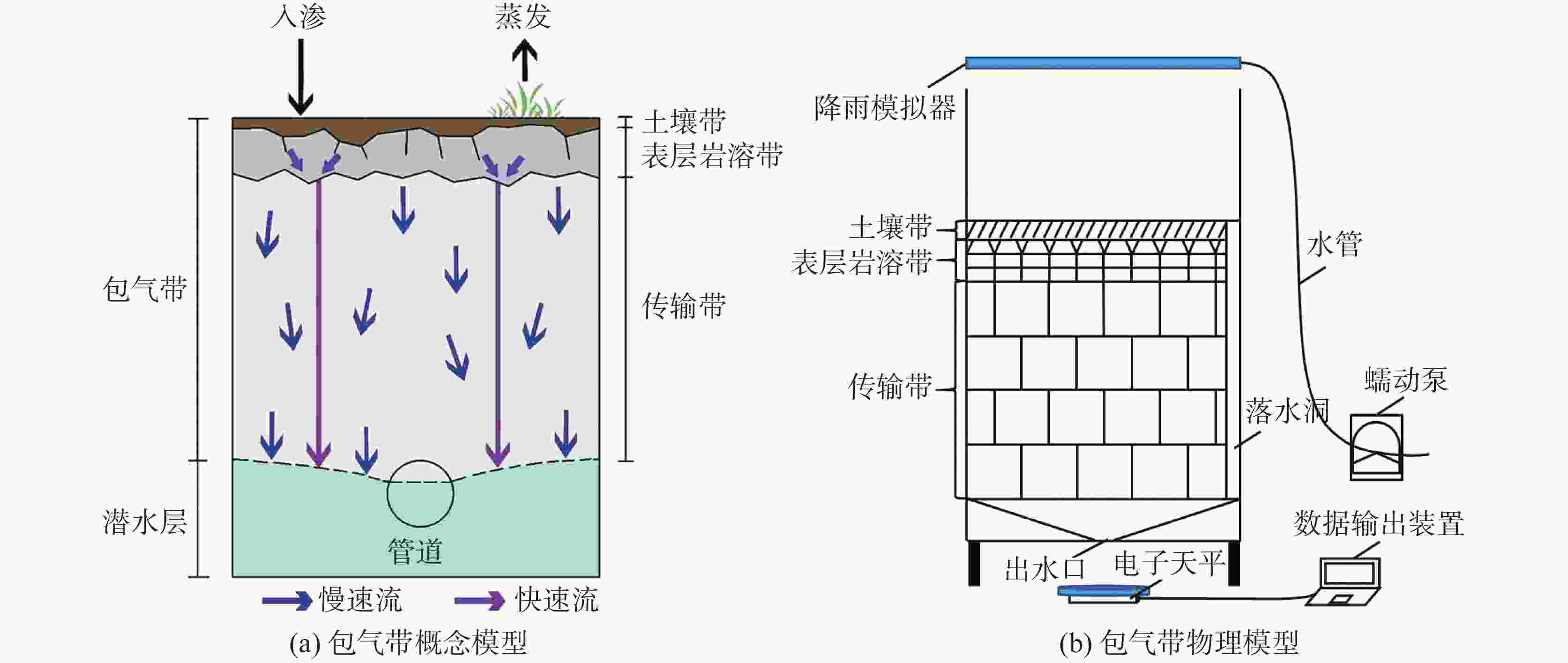
 下载:
下载:
